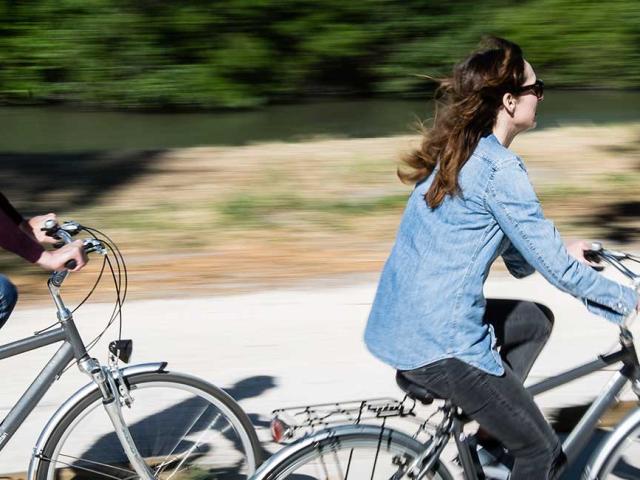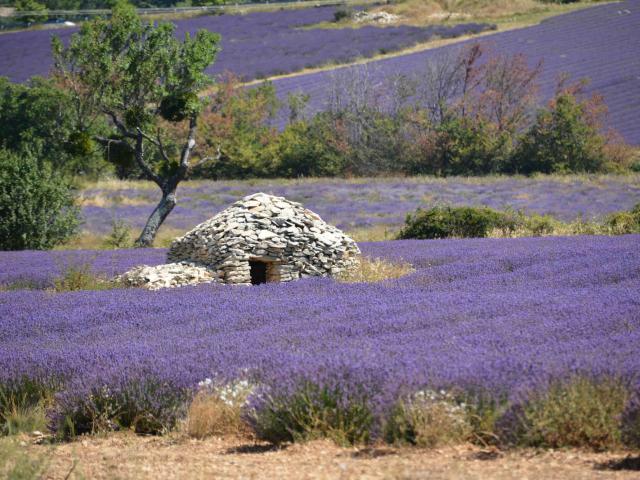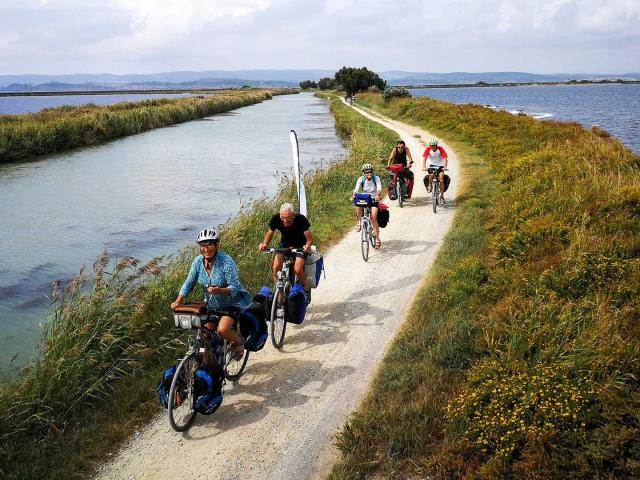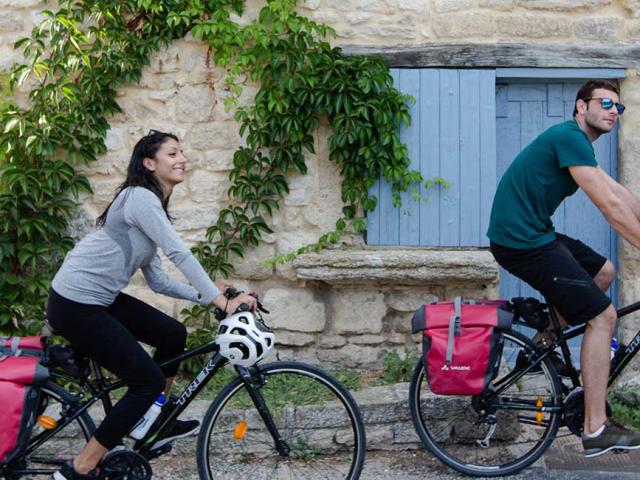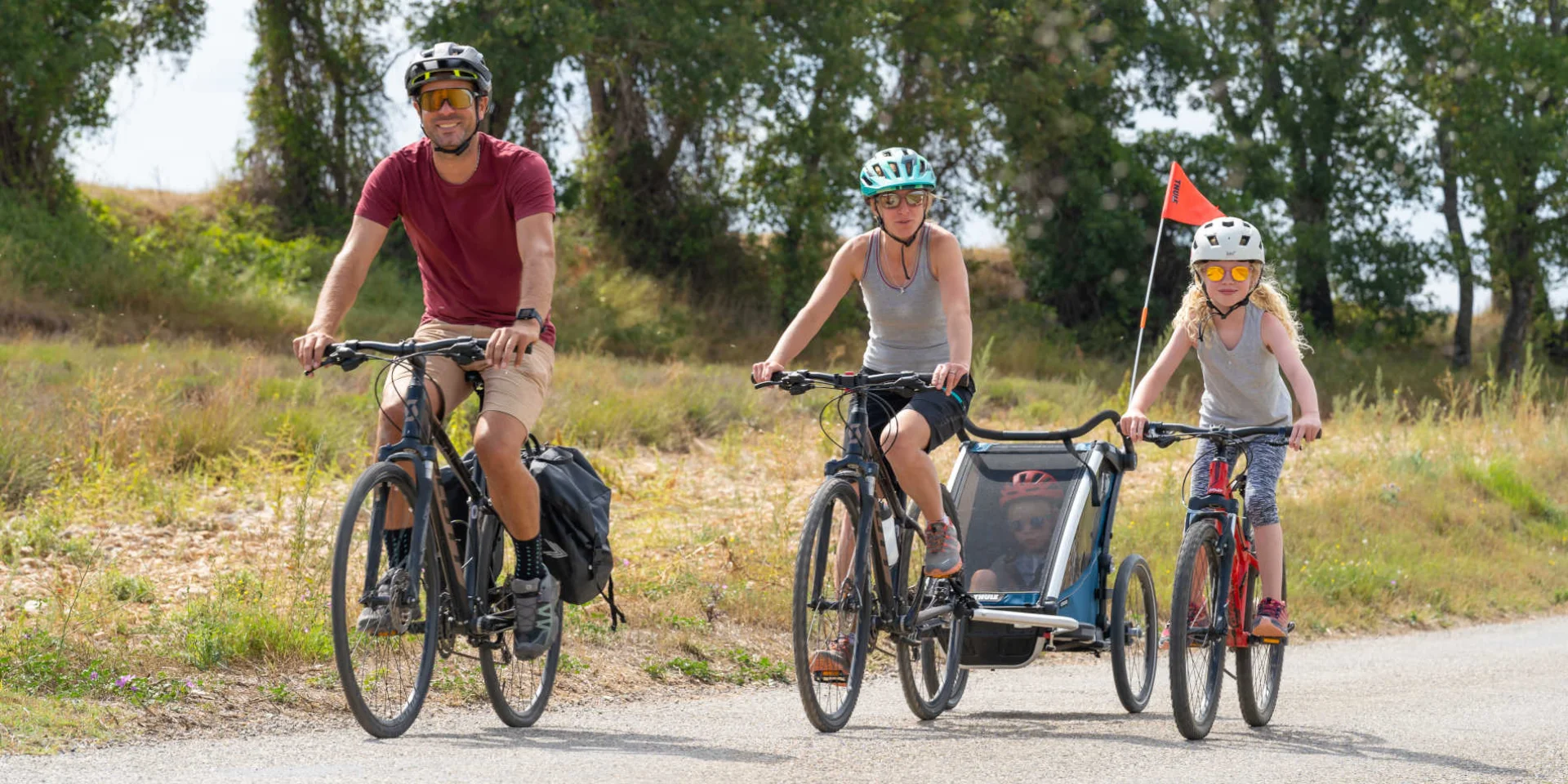 The Via Venaissia, a family-friendly route
The Via Venaissia, a family-friendly routeVia Venaissia by bike
uncover the secrets of the Comtat Venaissin from Orange to L’Isle-sur-la-SorgueHead for Via Venaissia! Before you set off, we’d just like to say that it gets its name from the Comtat Venaissin, a former papal state founded in the Middle Ages. To reach the cycle route, take the ViaRhôna in the village of Piolenc, and then ride on to Caderousse, a peaceful village nestled on one bank of the Rhône. Stop off on its 19th-century stone dyke, which used to be the rampart against flooding. From there, the itinerary continues along little roads lined with fields to Orange, which you’ll go through on shared roads. Founded by the Romans in 30 BC, the city has precious remains of the period, including the triumphal arch and the ancient theatre, both listed in the Unesco World Heritage. And also the ruins of the temple on the hill and the hemicycle, as well as those of the surrounding wall and the aqueduct.
The best adresses
Mainly developed as a green route, this stage has magnificent viewpoints over the two gems of the Vaucluse landscape: the Dentelles de Montmirail, rocky peaks finely chiselled by erosion, and Mont Ventoux, which watches over Provence from an altitude of 1910 metres. A key stage in the Tour de France, it has ben the dream of a whole generation of cyclists! Pedal along peacefully to the charming village of Jonquières, and don’t miss Sarrians, with its ramparts, wash-house and pretty little square with its fountains and cafés. Next, you’ll come to the typically Provencal Loriol du Comtat, and ride under the Cinq-Cantons aqueduct bridge, which allows the water of the Durance to cross the departmental road. In Carpentras, it’s time to take a foodie break and enjoy some local specialities: berlingots, strawberries in season, Côte-du-Rhône and AOC Ventoux wines.
The best adresses
As you leave Carpentras, the itinerary is a straight green route to Pernes-les-Fontaines. Nicknamed « the pearl of the Comtat », it’s well worth stopping there. With its 41 fountains, its Romanesque collégiale with 14 mansions and its Tour de l’Horloge, the former castle of the Comtes de Toulouse, the village is pure history. Pernes is also the birthplace of Paul de Vivie, the man who popularised the dérailleur: the Musée Comtadin du Cycle is dedicated to him. Back in the saddle and you’re off to Velleron on the green route before it becomes a shared road which winds across an agricultural plain. Well-known for its antique dealers, its paddlewheels dipping deep into the green water of the Sorgue River and its Sunday morning market, L’Isle-sur-la-Sorgue is quite simply enchanting.
The best adresses
As you leave L’Isle-sur-la-Sorgue, a temporary shared route allows you to reach Robion and continue your cycling excursion towards Menton or Le Perthus, via La Méditerranée à Vélo. Or to launch into the Autour du Luberon à Vélo loop, which goes through Cavaillon, Apt, Forcalquier and Manosque. We advise you to stop off in the village of Lagnes, proudly topped by its 12th-century castle with an incredible view over the Luberon and the Alpilles. In good weather, you can sometimes make out the Cévennes in the distance. Another point of interest in the village: from the Mairie, you can hike to the Mur de la Peste (Plague Wall), a 27-km rampart built in the 18th century which was an attempt to halt the epidemic coming from Marseille.
The best adresses
